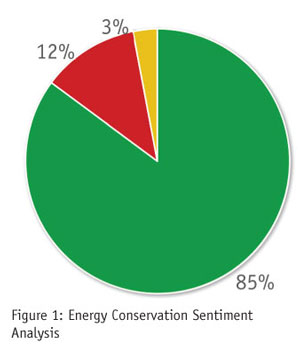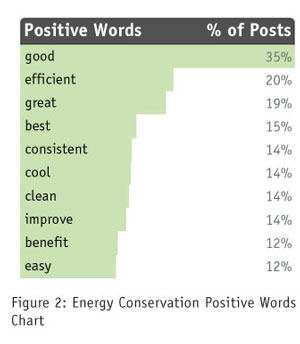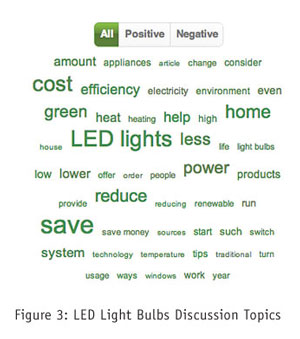Shed some light
Editor's note: Danielle Pederson is vice president, marketing, at Infegy, a Kansas City, Mo., research company. Maggie Miller is vice president, marketing, at Infegy.
In 1887, U.S. inventor Herman Hollerith built an electric tabulation machine to assist with the 1890 Census. While the 1880 Census took eight years to complete, the 1890 Census, with the help of Hollerith’s tabulation machine, was completed in only one year. Hollerith’s pioneering use of the then-burgeoning technology (electricity), along with his groundbreaking work in numerically-coded data, created a tremendous new platform from which to gather and analyze data from 64 million U.S. citizens in 1890.
Today, while we measure our ability to accomplish similar tasks in nanoseconds, it certainly is interesting that the core technologies utilized by Hollerith’s tabulation machine are just as prevalent in the capture, analysis and presentation of massive amounts of information – electricity and coded data. With Hollerith in mind, this article will focus on using today’s burgeoning technology (social media research) to analyze the public’s views on energy.
Today’s energy discussion
Clearly, today’s energy discussion revolves around elements that were not contemplated in the days of Hollerith and his electric tabulation machine. Back then, people were more concerned with the incredible growing applications of electricity. Unfortunately, Hollerith hadn’t yet stumbled on a solution to electronically store his data, as the entire 1890 Census was destroyed by fire in 1921.
More than a century after Hollerith’s invention, the world of big data is just hitting its stride. We now know we can collect, analyze and use this large amount of information, from forecasting financial markets and political elections to accurately predicting the winner of a reality show weeks in advance. Social media research allows us to find out what consumers are saying about virtually any topic, even electricity, natural gas, energy conservation and certain light bulbs. Through this type of research, we can uncover real insights on the utilities industry and track consumer opinion on related issues.
Many different outlets
In today’s society, there are many different outlets for consumers to share their opinions. Views are shared on many different online networks, spreading through virtual word-of-mouth. Using Infegy’s social media research platform Social Radar, we can look inside conversations about going green in terms of energy use. From these conversations, we can further examine how consumers perceive energy conservation.
To obtain this data, we looked back into related conversations posted over the last year. We can search the system to focus our analysis around specific comments related to certain ways to save energy, with each query capable of analyzing millions of individual comments and opinions. Because of the high volume of data posted to the Web via blogs, social networks, forums and more, traditional manual analysis is impractical at best, impossible at worst. Social Radar is designed to automate the examination process and interpret written language.
Speaking favorably
First, looking broadly at conversations around energy conservation, we see that sentiment is 85 percent positive, meaning people are speaking favorably about the phrase. Sentiment measures the percentage of commentary about the phrase that is positive, negative or mixed. In the sentiment chart in Figure 1, red shows negative conversation, yellow mixed and green positive.

We can dig deeper into these conversations about green energy use by extracting specific topics and points of influence within these conversations. By doing this, we can pull specific energy-saving tips that conversation-starters are sharing. Many of these tips involve replacing household items to prevent cold or hot air from passing through, such as doors, windows, curtains and insulation. Another suggestion to cut down on energy use is to keep an eye on the temperature of the house. Keeping the temperature steady uses less energy than constantly adjusting the A/C or heat, therefore reducing heating and cooling costs.
A dominant topic
When we drill into the data even further, we see the words “money,” “cost,” “efficiency,” “heat” and “help” are largely associated with energy conservation. From this, we can see price is a dominant topic within these online discussions. People having these discussions online talk about their goals to lower heating and cooling costs and save energy all at once.
Many of the conversations perceive saving energy and saving money as hand-in-hand. Not only are consumers going green, it appears they’re also saving green. The concept of cost is mentioned in 37 percent of dialog surrounding energy conservation, while the word “expensive” is present in 7 percent of negative posts. This shows consumers recognize that while some of these energy-saving tips save money in the long run, they can be expensive to execute.
As mentioned above, the majority of content online around conserving energy is positive. Figure 2 shows the most positive words mentioned within that dialogue. The word “efficient” is present in 20 percent of positive posts, showing consumers value efficiency and see it as an integral part of saving energy. “Consistent,” “cool” and “clean” are each seen in 14 percent of conversations. From this, we can infer these words are being used most frequently when discussing and sharing tips for keeping home temperatures consistent when it comes to heating, ventilating and cooling. Keeping air filters clean can increase the efficiency of heating and cooling systems. A dirty air filter will slow down airflow and make the system work harder to maintain a good temperature.

A related subject
Building a substantial amount of conversation online is a related subject, LED lights. A push for adoption of LED light bulbs is underway – and for good reason: a longer bulb life span, less energy consumption and increased effective brightness. The catch for all of these upgrades is the higher upfront cost. LED light bulbs are more expensive than CFL or incandescent bulbs but they add and sustain value in the long run.
Especially today, consumers are mindful about using environmentally-friendly products but are also more conscious with their spending habits. Since the price is higher than most bulbs, what feature, out of the three mentioned above, draws Americans to these new light bulbs? The research shows that people are most passionate about the bulb consuming less energy. As you can see from the discussion topics displayed in Figure 3, people are talking positively about efficiency. The dominant word “save” shows the focus on saving energy.

Deeper content analysis
When referencing passion, we utilize our social analytics offering, which requires deeper content analysis. Teaching the technology to understand grammar and context goes a long way to further refine a computer’s ability to interpret language. Passion is a computed score judging how passionate references to the query tend to be. For example, “I love LED bulbs. They are much more efficient!” is more passionate than “I like LED bulbs.” This score is based on emotional language usage like this, as well as overall sentiment occurrence and the difference between positive and negative usage.
People discussing LED light bulbs online are not very passionate about the brightness of the bulbs but still speak positively about them. In fact, conversations surrounding the brightness of the LED bulbs are referenced with 90 percent positivity. The same goes for consumers discussing the increased life span of LED lights; conversations about the life span are less passionate but very positive, at 92 percent positivity. People realize that while these light bulbs cost more money than a CFL bulb or an incandescent bulb, they also last longer.
Gaining intelligence from this research, advertisers can utilize this information to emphasize the strong qualities people enjoy about LED light bulbs, like the longer life span. If advertisers spotlight the extended life of LED bulbs, there is a high probability potential buyers will be more willing to spend a few extra dollars upfront instead of spending less money and replacing the bulbs more often. In the long run, time and energy are saved, which is attractive to consumers.
Immensely advanced
This massive amount of conversation happening online every day allows marketing firms, advertising agencies and enterprises to take advantage of social data-generated insights. Since the creation of Herman Hollerith’s groundbreaking platform, the processes and platforms utilized for gathering and analyzing data have become immensely advanced. Today the possibilities and opportunities big data offers are astounding. We have come a long way since Hollerith’s electric tabulation machine and the advantages the future holds for social media research are bound to be extraordinary.
